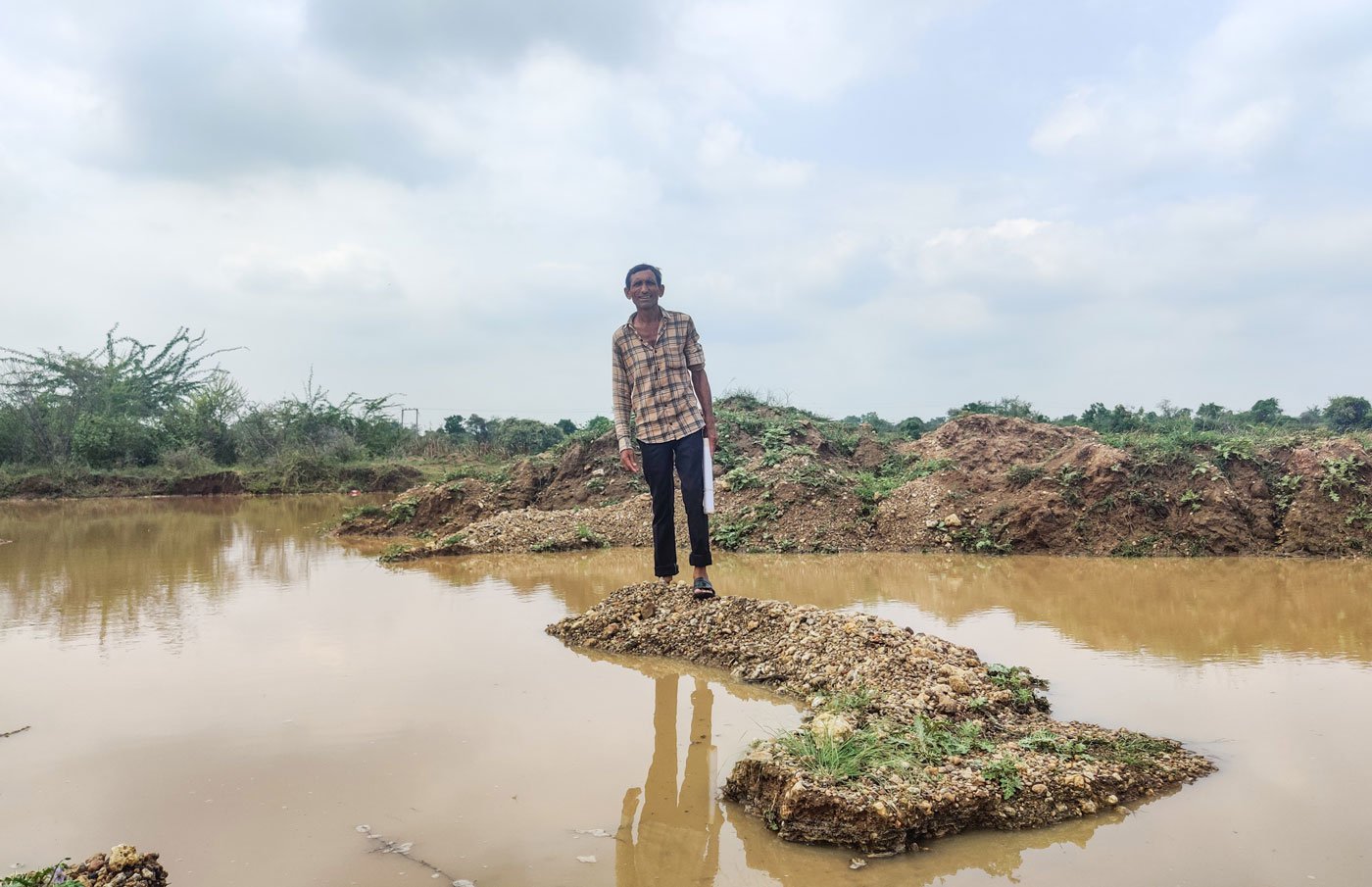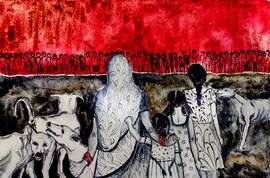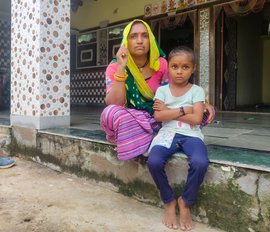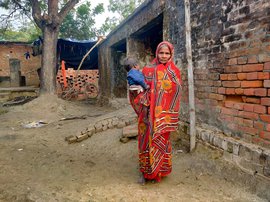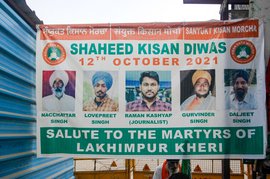Balabhai Chawda, 57, has five acres of farmland in Gujarat’s Surendranagar district. It is fertile. It is irrigated. He has owned it for 25 years. There is, however, just one problem. He is not allowed near the farmland he owns.
“I have proof of my ownership,” he says, unfolding the land title papers that have now turned brittle and yellow. “But the possession [of the land] is with people from the dominant caste.”
Balabhai, a labourer belonging to the Chamar community, a Scheduled Caste in Gujarat, has turned to everyone he can for help – there aren’t any more doors left to knock on. “I go to the land every day without exception,” he adds. “I look at it from a distance and imagine what my life would have been...”
The farmland, in Bharad village of Dhrangadhra taluka , was allotted to Balabhai in 1997 under Gujarat’s land distribution policy. The ‘surplus land’ acquired under the Gujarat Agricultural Lands Ceiling Act of 1960 , which imposed limits on agricultural landholding, was earmarked “to subserve the common good”.
These acquired land areas, known as santhani jamin, along with government-owned wasteland, were set aside for “persons in need of land for agriculture” – including farmers’ cooperatives, landless persons and agricultural labourers, among others – with preference given to members of Scheduled Caste and Scheduled Tribe communities.
The scheme works on paper. In practice, not so much.
After receiving the land title, Balabhai made plans to cultivate cotton, jowar and bajra on his plot. He even thought of building a small house on the farmland so he could live where he worked. He was 32 at the time, with a young family and a future to forward to. “I had three small kids,” he says. “I had been working as a labourer. I thought the days of toiling for someone else were behind me. With my own land, I thought I could give my family a good life.”
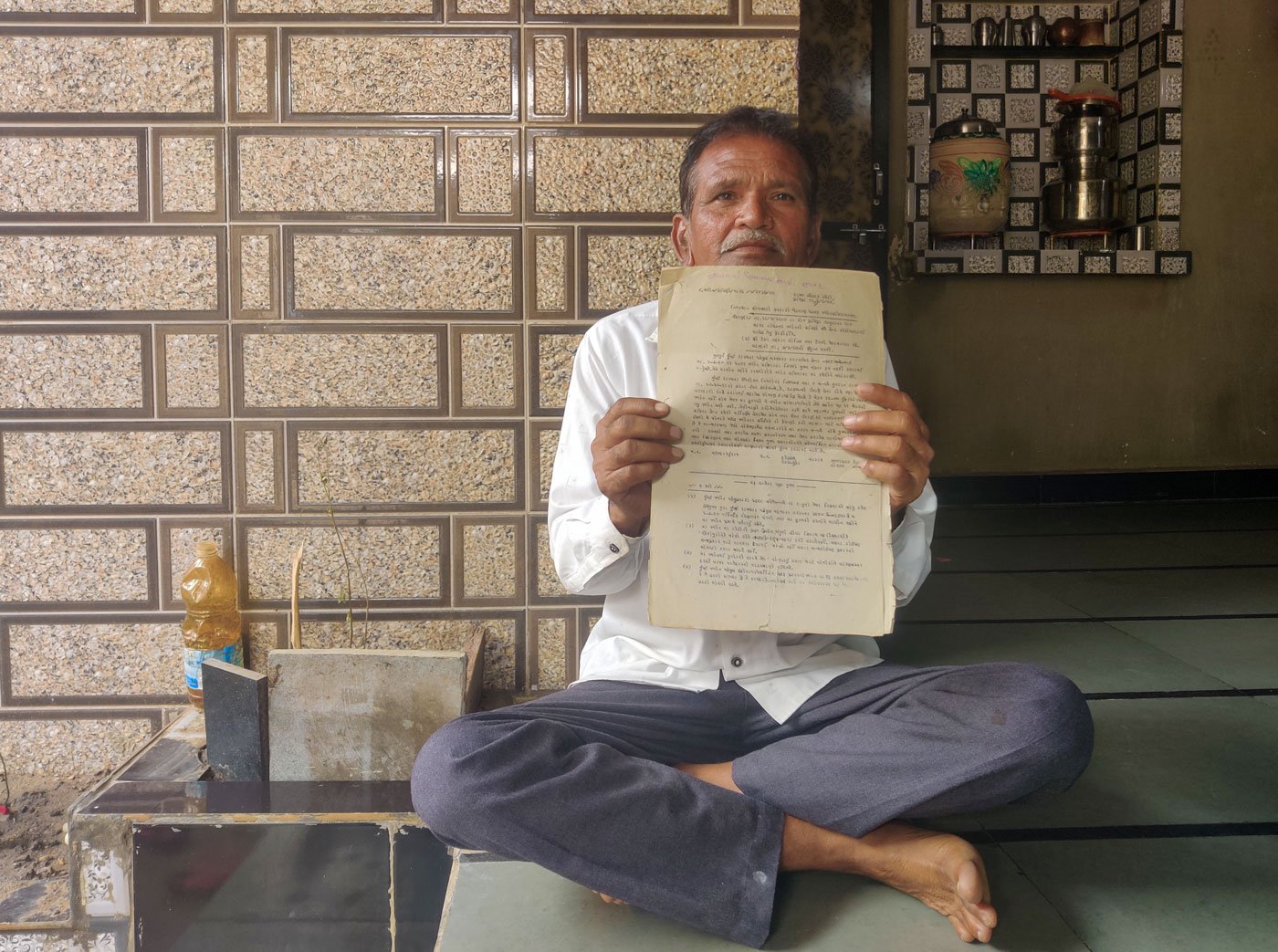
Balabhai Chawda holding up documents of his five-acre land in Bharad village that he's been waiting to take possession of for 25 years
But Balabhai was in for a rude shock. Even before he could take possession of his land, two families in the village had grabbed it. The families – one from Rajput community and the other Patel, dominant castes in the region – continue to encroach on the land even today. And Balabhai has had to go on working as a labourer. His sons Rajendra and Amrut, 35 and 32, had to start working in the fields when they were still very young. They earn Rs. 250 a day when they have work, which is about three times a week.
“I have tried hard to stake my claim but the piece of land is surrounded by properties owned by people from the dominant castes,” says Balabhai. “They don’t let me enter the area. Initially, I asserted my right [to cultivate the land] and got into fights, but they are influential and powerful.”
One of the fights, in the late ’90s, landed Balabhai in the hospital. He was attacked with a shovel, which fractured his hand. “I complained to the police,” he says. “I approached the [district] administration. It didn’t work. The government claims it has distributed land to the landless. But on the ground, it has only given out papers. The land has stayed where it was [in others' hands].”
At the time of Census 2011, India was home to over 144 million landless agricultural labourers . The number had risen 35 per cent since the previous Census, in 2001, when it was 107 million. In Gujarat alone, 1.7 million became landless labourers in the same period – a 32.5 per cent increase (from 5.16 million to 6.84 million).
An indicator of poverty, landlessness strongly correlates with caste. Though the Scheduled Castes form 6.74 per cent of the total population of Gujarat (Census 2011), they operate – as land owners or otherwise – merely 2.89 per cent of the area under cultivation in the state. The Scheduled Tribes, 14.8 per cent of the state’s population, work on 9.6 per cent of the land.
In 2012, Dalit rights activist Jignesh Mevani had filed a public interest litigation (PIL) in Gujarat High Court, alleging non-implementation of land reform policies by the state government. The santhani land acquired under the ceiling law had not being allotted to whom it was intended – the landless, Scheduled Castes and Scheduled Tribes.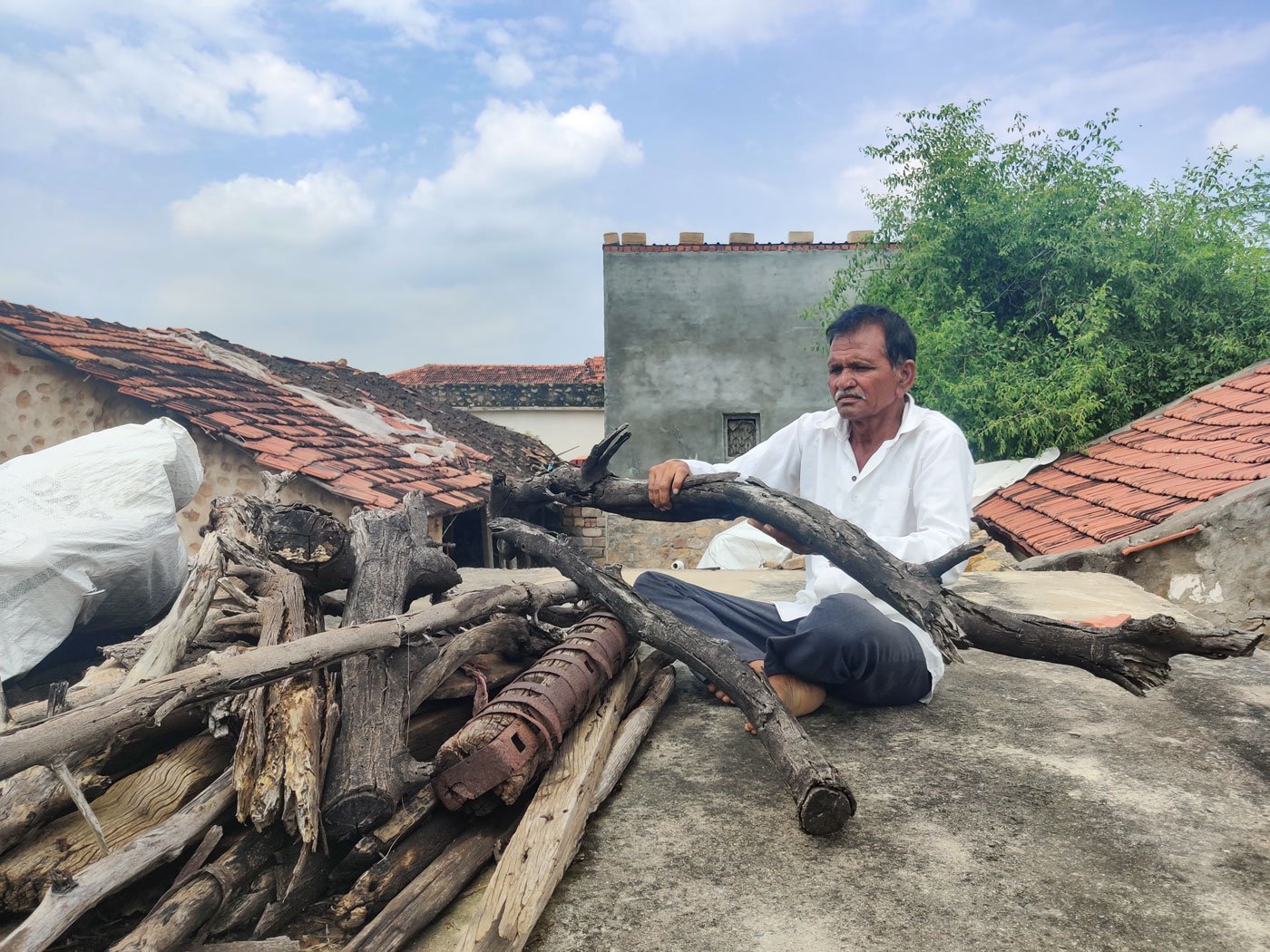
Balabhai on the terrace of his house. ‘I look at my land from a distance and imagine what my life would have been... ’
The union government’s ‘Quarterly Progress Report (Cumulative) on Implementation of Land Ceiling Laws’ was cited in the court proceedings. It had said that until September 2011, 163,676 acres of land had been distributed to 37,353 beneficiaries in Gujarat – and only 15,519 acres remained to be distributed.
However, Mevani’s PIL, which is still being heard in Gujarat High Court, focusses on dispossession of the allotted land. In a number of cases, he stated – based on RTI responses and government records – the people did not get possession of the surplus land and wasteland allotted to them.
Balabhai has been waiting for more than two decades. “I fought for possession in the beginning,” he says. “I was in my early 30s. I had a lot of spirit and energy. But then my children started growing up and I got busy. I had to look after them and think about their safety as well. I didn’t want to do anything that would put their life in danger.”
Mevani’s lengthy petition, running into 1,700 pages, contains examples from across Gujarat, suggesting Balabhai’s case is not anomalous.
“In some cases, the beneficiaries have received possession of land but only after persistent interventions by activists,” says Mevani, who currently represents Vadgam constituency in Gujarat Legislative Assembly. He adds that the state and the local administrations accepted failings while responding to his petition.
For example, in a letter dated July 18, 2011, the District Inspector Land Records (DILR) of Ahmedabad had said that the task of land measurement had remained incomplete in some villages of Ahmedabad district due to inaction of revenue administration officials. A few years later, on November 11, 2015, the DILR of Bhavanagar district had admitted, that in 50 villages demarcation had not been carried out for lands allotted from 1971 to 2011.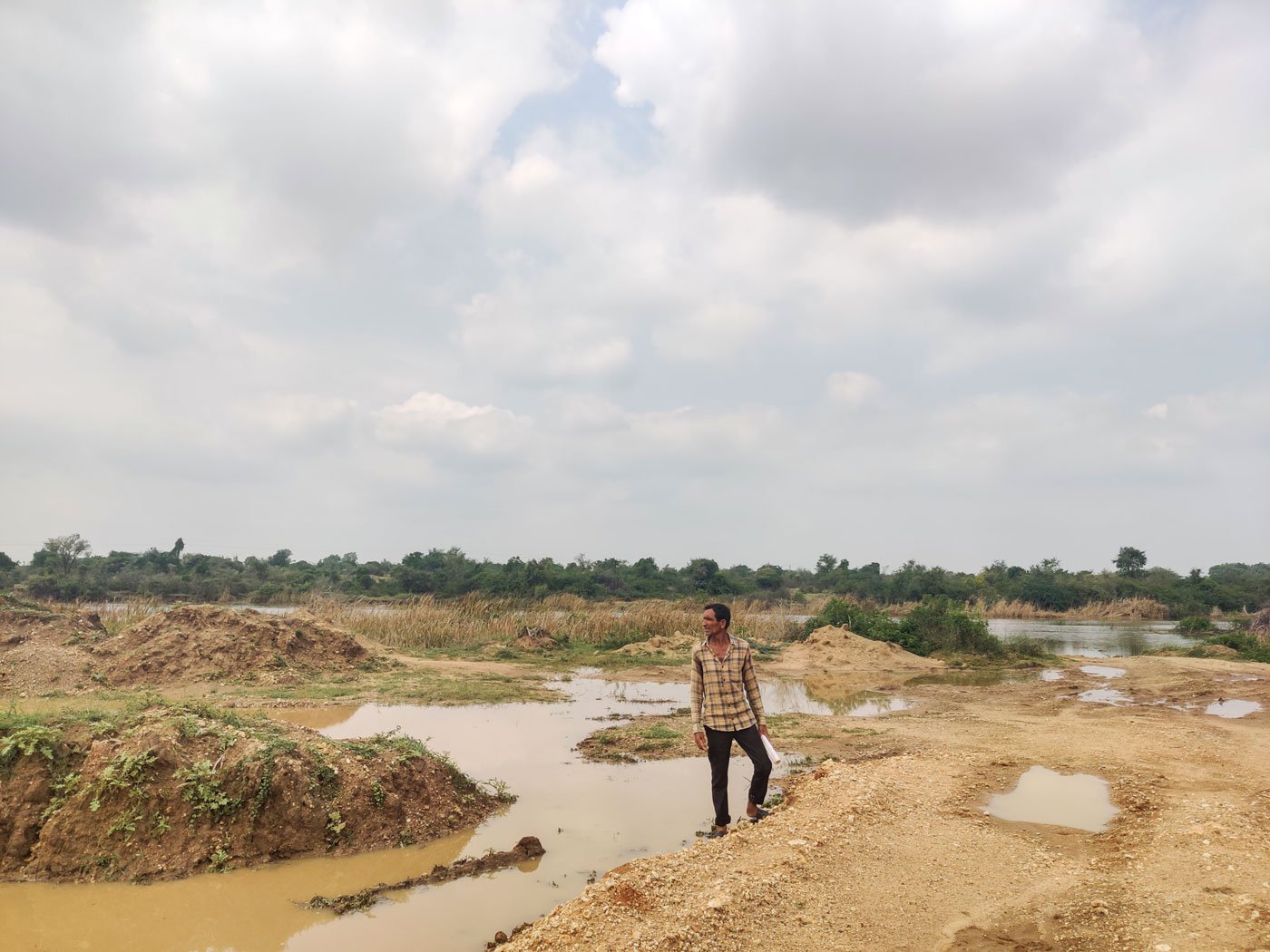
Chhaganbhai Pitambar standing on the land allotted to him in the middle of Chandrabhaga river in Surendranagar district
In an affidavit filed in Gujarat High Court on December 17, 2015, Harish Prajapati, under secretary of the state’s Revenue Department, said the 15,519 acres of land that remained undistributed was under litigation – and 210 cases were pending on it.
Prajapati also stated that a mechanism to implement the Agricultural Lands Ceiling Act had been proposed – including the appointment of four officers and a zonal division of the state. “The exercise is to be carried out by physically verifying each and every parcel of land along with further verification of the possession. This would include a mammoth task of physically verifying thousands of acres of land,” the affidavit said. But allocation of wasteland would remain under the Collector’s purview, it added.
Not much has changed seven years on, says Anand Yagnik, a noted advocate appearing for Mevani in the PIL in Gujarat High Court. “The state gives land as a part of distributive justice on paper without taking possession from the dominant caste,” he says. “If the beneficiary from the Scheduled Caste community insists on possession, they are beaten up. Local administration never helps. So the distributive justice remains on paper and the civilisational wrong continues in an independent India.”
This reporter wrote to Kamal Dayani, additional chief secretary in the Revenue Department currently, and to Swaroop P., commissioner of land reforms, to ask about the current status of land distribution in Gujarat. The story will be updated if they respond.
In the case of Chhaganbhai Pitambar, 43, the administration failed him even without his land being grabbed by someone else. The five acres of land he was allotted in Bharad in 1999 is right in the middle of Chandrabhaga river. “It is mostly under water, so I can’t do much with it,” he says, taking us there.
Puddles of muddy water cover a large part of his land, and the rest of it has slippery soil. “In 1999 itself I wrote to the deputy collector for a change of land,” he says. “In 2010, the mamlatdar [head of the taluka ] denied my request saying it has been over 10 years since the allotment and nothing can be done now. Is it my fault the administration did not do anything for 10 years?”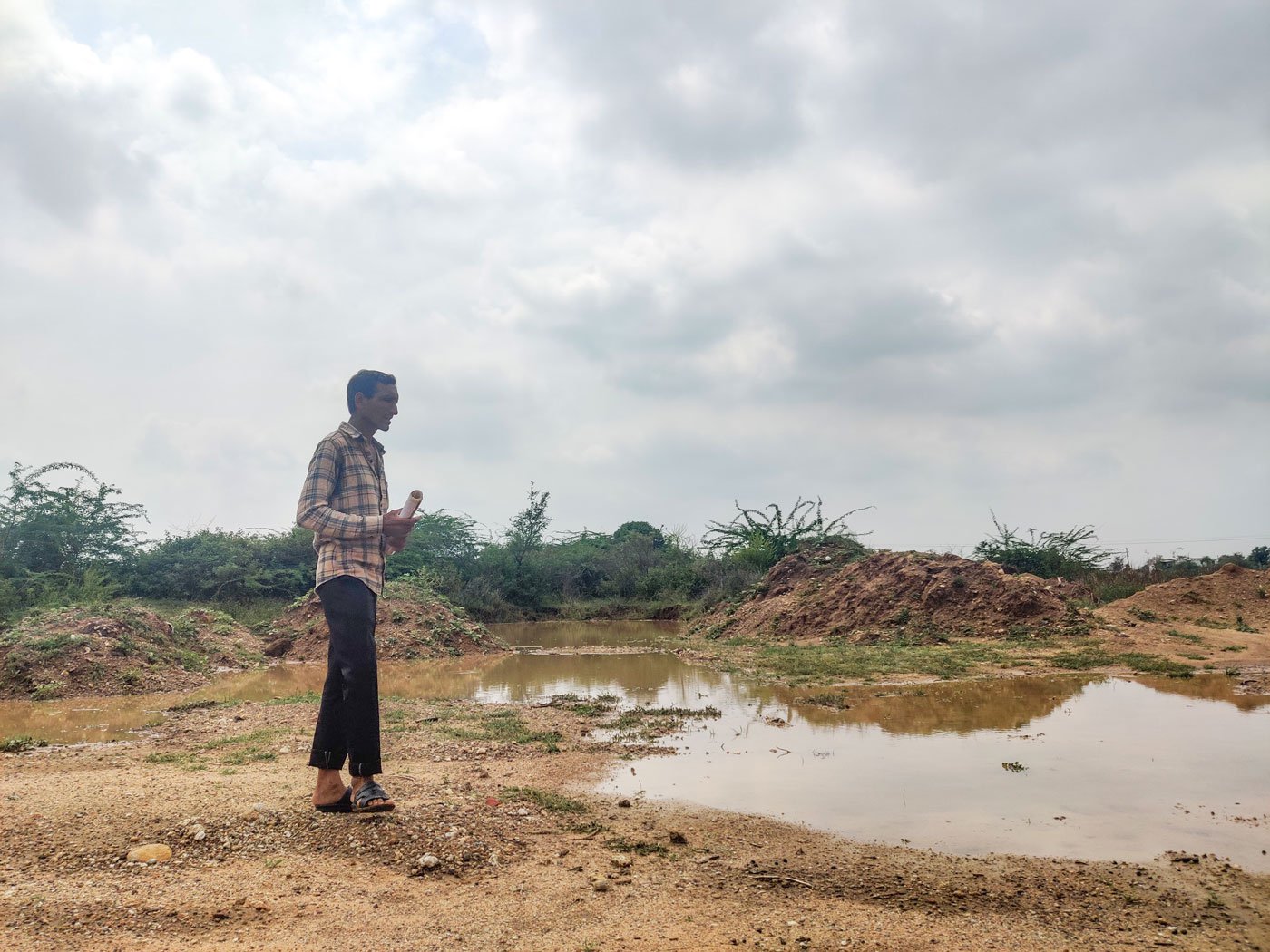
Walking through the puddles Chhaganbhai explains that the land is under water almost all the time
The fallout of this negligence has been severe on Chhaganbhai and his family. They belong to the Chamar community. Kanchanben, his wife, says that when the household is solely dependent on wage labour, there is no scope for growth or security. “You earn in the day and buy food at night,” she says. “If you have land, you can at least grow food for yourself, and the cash from labour work can be used for other needs.”
The family has had to borrow money from private moneylenders for the children’s education. “About 10 years ago, we borrowed Rs. 50,000 at 3 per cent per month,” says Kanchanben, 40. “We have four kids. Earning Rs. 100-150 per day in those days, we didn’t have many options. We are still repaying the debt.”
The consequences of losing land rights are multifold. Besides the investment of time and energy to apply for it and the stress of then not being able to possess it, financial loss accrued over the years is often underestimated.
Even if one considers that a farmer could earn as less as Rs. 25,000 from an acre during two crop seasons, Mevani’s PIL submits, the loss over 5-7 years is Rs. 175,000 per acre.
Balabhai has five acres, and he has not been allowed to cultivate his land for 25 years. After adjusting for inflation, the cost of lost earnings comes up to lakhs of rupees. And there are thousands of farmers like Balabhai.
“Just the land would be Rs. 25 lakhs in the market today,” he says. “I would have lived like a king. I could have bought a motorcycle of my own.”
Land possession not only ensures financial stability but also brings dignity and respect in the village. “Upper caste landowners treat you horribly when you work as a labourer on their farmland,” says 75-year-old Tribhuvan Vaghela, in Ramdevpur hamlet of Dhrangadhra taluka , Surendranagar district. “They humiliate you because you are at their mercy. You depend on them for employment so you can’t do anything about it.”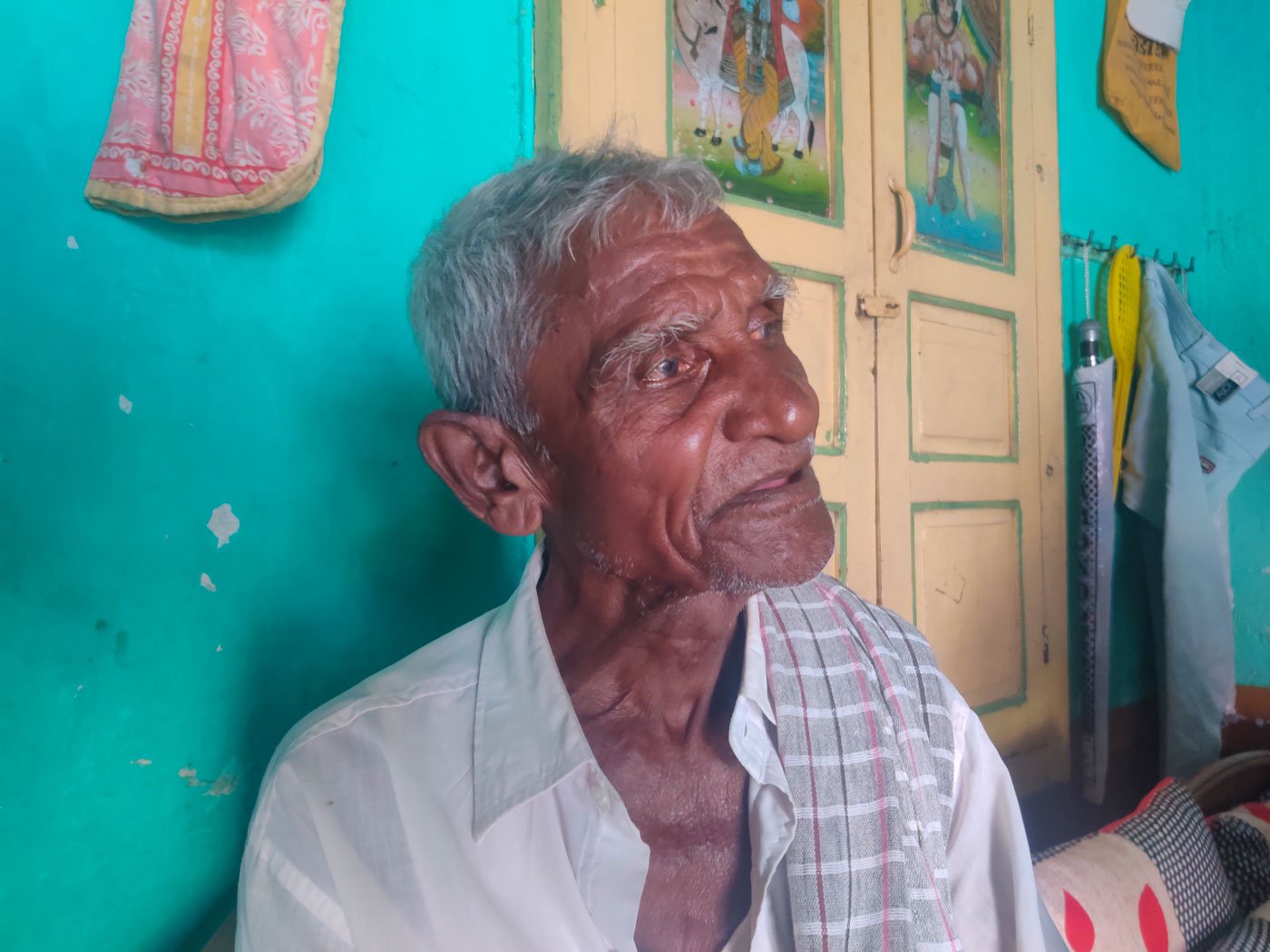
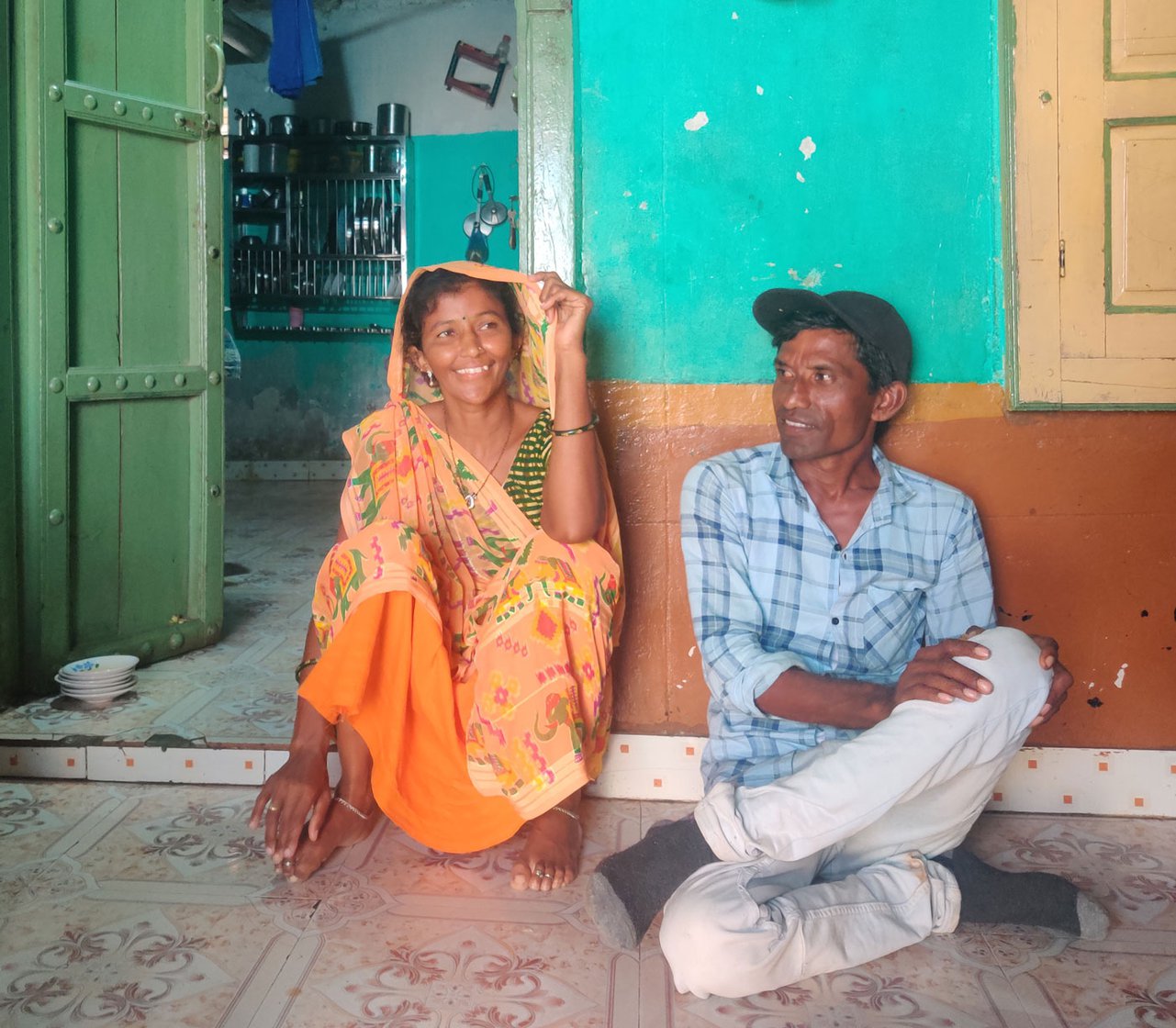
Left: Tribhuvan Vaghela says it took 26 years of struggle for him to get possession of his land. Right: Vaghela's daugher-in-law Nanuben and son Dinesh at their home in Ramdevpur hamlet
Vaghela, who belongs to the Bunkar community, a Scheduled Caste, was allotted 10 acres of land in 1984. But he got possession only in 2010. “It took so long because society is blind to caste discrimination,” he says. “I got in touch with Navsarjan Trust. Their activists staged protests and pressurised the administration [to take action]. What we did needed courage. It wasn’t easy standing up to the Thakur [Rajput] caste in those days.”
A renowned Dalit rights activist in Gujarat and founder of Navsarjan Trust, Martin Macwan highlights how land reforms benefited tenant cultivators in Saurashtra – the region where Surendranagar district is located – who mainly belonged to the Patel (Patidar) caste. “The first chief minister of Saurashtra [state], Uchharangray Dhebar, brought three legislations and transferred over 30 lakh [3 million] acres of the land to the Patels before Gujarat became a separate state in 1960 [and erstwhile Saurashtra state was merged in it],” he says. “The community protected their land and over the years became one of the most prominent in Gujarat.”
Vaghela was fighting for his land while working as an agricultural labourer at the same time. “The struggle was worth it,” he says. “I did it so my son and his children won’t have to face what I did. The market value of that land is Rs. 50 lakhs today. They can walk in the village with their head held high.”
Vaghela’s daughter-in-law, Nanuben, 31, says the family has become more confident now. “We work hard on the farmland and earn about Rs. 1.5 lakhs a year,” she says. “I know it isn’t a lot. But we are our own bosses. We don’t have to beg for work or money. My kids won’t have problems getting married. Nobody wants to marry their children to a household with no land.”
Balabhai wants to experience the freedom that Vaghela’s family has lived with for 10 years now. “I have spent my whole life waiting to get my land,” he says, folding back the brittle papers neatly. “I don’t want my sons to be working as labourers at 60. I want them to live with some status and dignity.”
Balabhai still imagines he’ll take possession of the land someday. He still wants to cultivate cotton, jowar and bajra on it. He still plans to build a small house on his land. He wants to know what it feels like to be a landowner. He has held on to the papers carefully for 25 years, thinking they will mean something one day. But, more importantly, Balabhai has held on to hope. “It’s the only thing keeping me alive.”